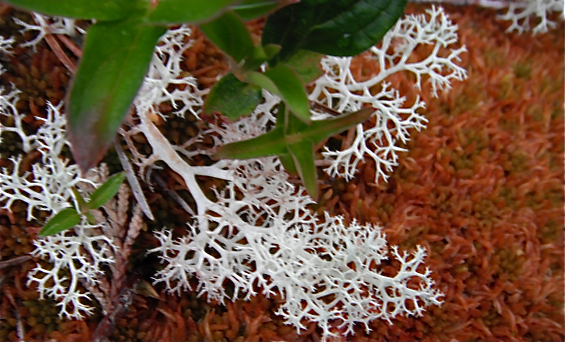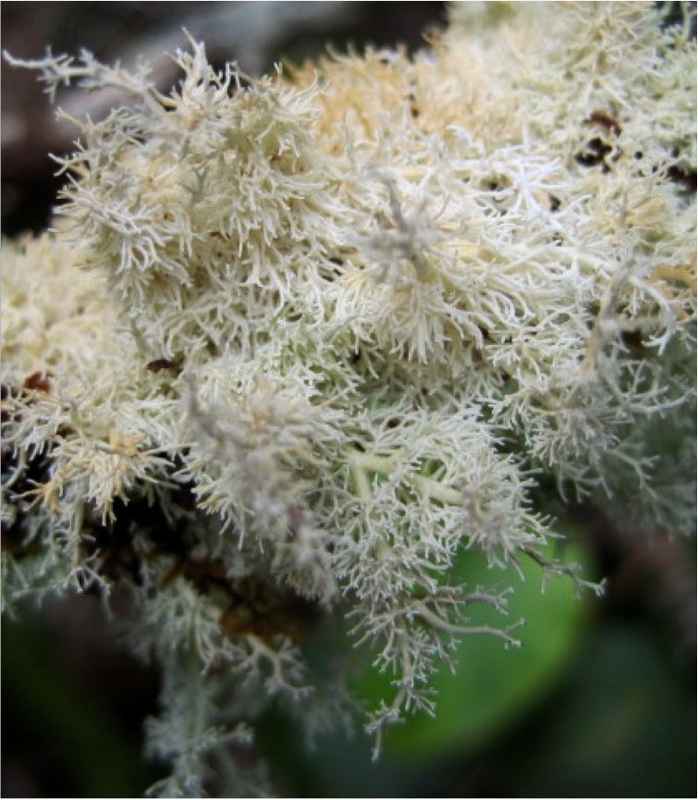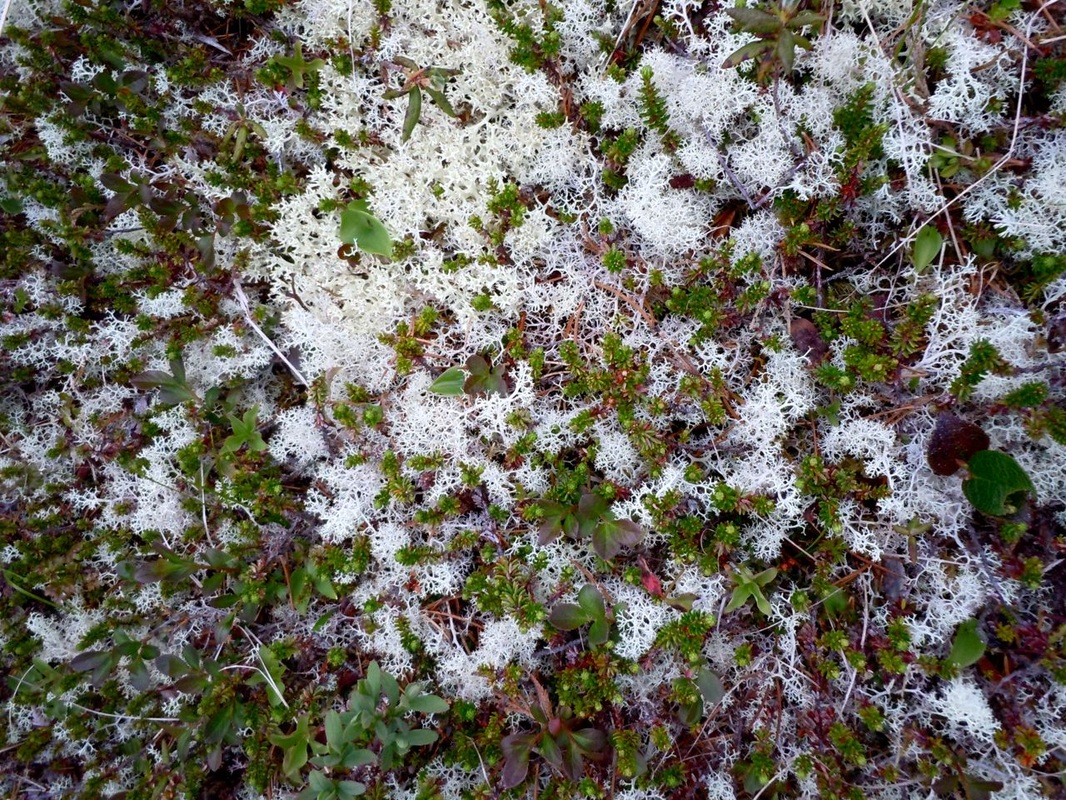Coastal reindeer, Maritime reindeer • Cladina portentosa
{Cladina = small branches, portentosa = monstrous/hideous}
Identification
Coastal reindeer is an upright, intricately branched shrub lichen. Its branches tend to occur in threes, have no distinct orientation, and form dense tufts. They are hollow and branch from a main stem. At 4-7 cm, tall coastal reindeer is considered to be a medium to large lichen. It is a yellow-green or green-grey colour so pale it almost looks white, and parts of it have a shiny surface that is visible with a hand lens. It is fairly brittle when dry, but becomes pliable when wet. Overall it can look like a dusting of snow when it spreads to form carpets.
Habitat & Range
Coastal reindeer is a common coastal species. It is particularly common at low elevations, and it usually grows on the ground in open areas where it forms spreading carpets. In the Pacific Northwest its range is restricted to the coast, and stretches from southeastern Alaska into Oregon. It is also found in the United Kingdom.
Similar Species
There are several similar Cladina species found in BC, and many of them also have 'reindeer' in their common name. Ectomorphic reindeer (Cladina mitis) is perhaps the most similar, but it usually branches in fours, and is more cottony in appearance. Mesomorphic reindeer (Cladina arbuscula) is also similar, but it does not have a main stem like coastal reindeer.
Coastal reindeer is an upright, intricately branched shrub lichen. Its branches tend to occur in threes, have no distinct orientation, and form dense tufts. They are hollow and branch from a main stem. At 4-7 cm, tall coastal reindeer is considered to be a medium to large lichen. It is a yellow-green or green-grey colour so pale it almost looks white, and parts of it have a shiny surface that is visible with a hand lens. It is fairly brittle when dry, but becomes pliable when wet. Overall it can look like a dusting of snow when it spreads to form carpets.
Habitat & Range
Coastal reindeer is a common coastal species. It is particularly common at low elevations, and it usually grows on the ground in open areas where it forms spreading carpets. In the Pacific Northwest its range is restricted to the coast, and stretches from southeastern Alaska into Oregon. It is also found in the United Kingdom.
Similar Species
There are several similar Cladina species found in BC, and many of them also have 'reindeer' in their common name. Ectomorphic reindeer (Cladina mitis) is perhaps the most similar, but it usually branches in fours, and is more cottony in appearance. Mesomorphic reindeer (Cladina arbuscula) is also similar, but it does not have a main stem like coastal reindeer.
References
Cladina portentosa (Dufour) Follmann. Giavarini, V.J. (2008).
Cladonia portentosa (Dufour) Coem. Lichen Ireland. National Museums Northern Ireland. Accessed 02/09/2013.
Pojar, J. and MacKinnon, A. (1994). Plants of Coastal British Columbia. Vancouver, BC: Lone Pine Publishing. P. 502.
Authors and editors of page
Kelly Fretwell and Brian Starzomski (2013).
Cladina portentosa (Dufour) Follmann. Giavarini, V.J. (2008).
Cladonia portentosa (Dufour) Coem. Lichen Ireland. National Museums Northern Ireland. Accessed 02/09/2013.
Pojar, J. and MacKinnon, A. (1994). Plants of Coastal British Columbia. Vancouver, BC: Lone Pine Publishing. P. 502.
Authors and editors of page
Kelly Fretwell and Brian Starzomski (2013).






